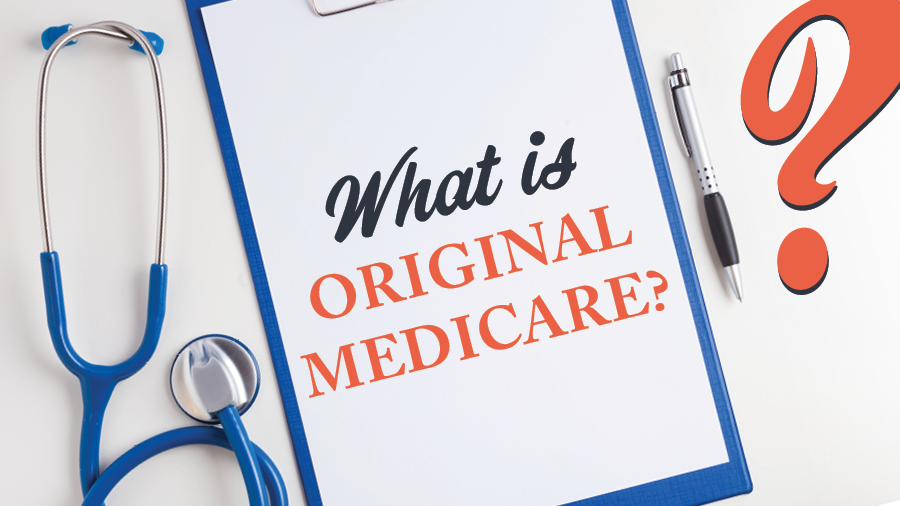Medicare 101

Original Medicare

Medicare is the federal health insurance program for:
* People who are 65 or older
* Certain younger people with disabilities
* People with End-Stage Renal Disease (permanent kidney failure requiring dialysis or a transplant called ESRD)
Original Medicare is a fee-for-service health plan that has two parts: Part A (Hospital Insurance) and Part B (Medical Insurance). After you pay a deductible, Medicare pays its share of the Medicare-approved amount, and you pay your share (coinsurance and deductibles).

Part A (Hospital Insurance)
- Inpatient care in a hospital
- Skilled Nursing facility care
- Nursing home care (inpatient care in a shilled nursing facility that’s not custodial or ling-term care)
- Hospice Care
- Some home health care

Part B (Medical Insurance)
Part B covers 2 types of services
- Medically Necessary Service:
- Services or supplies that are needed to diagnose or treat your medical condition and that meet accepted standards of medical practice
- Preventive Services:
- Healthcare to prevent illness (like the flu) or detect it at an early stage when treatment is most likely to work best.
- You pay nothing for most preventive services if you get the services from a healthcare provider who accepts assignment.
Part B covers things like:
- Clinical Research
- Ambulance Services
- Durable Medical Equipment
- Mental health
- Inpatient
- Outpatient
- Partial hospitalization
- Limited outpatient prescription drugs
Out of Pocket Costs
What is your financial responsibility once you’ve accessed care or treatment?

Part A Deductible and coinsurance
You pay:
- $1484 deductible for each benefit period
- Days 1-60: $0 coinsurance for each benefit period
- Days 61-90: $371 coinsurance per day of each benefit period
- Days 91 and beyond: $742 coinsurance per each “lifetime reserve day”
- After day 90 of each benefit period, you have 60 days over your lifetime
- Beyond lifetime reserve days: You are responsible for all costs

Part B deductible and coinsurance
You pay:
- $203 deductible
- 20% coinsurance
After your deductible is met, you typically pay 20% of the Medicare-approved amount for most doctor services (including most doctor services while you’re a patient in a hospital), outpatient therapy, and durable medical equipment (DME).
There is NO maximum out of pocket limit for Part B, which means you’re responsible for 20% of all associated services.
Reducing your financial exposure
Programs available through private insurance companies designed to ease your financial burden

Part D (Drug Coverage)
You’ll make these payments throughout the year in a Medicare drug plan
- Premiums (Varies depending on plan selection)
- Yearly Deductible (Varies depending on plan selection)
- Copayments, and coinsurance (Varies depending on plan selection)
- Costs in the coverage gap (The Donut Hole)
- Costs if you have to pay a late enrollment penalty
- Costs if you get “Extra Help”
Your actual drug coverage costs will vary depending on:
- Your prescriptions an whether they’re on your plan’s list of covered drugs (Formulary)
- What “tier” the drug is in
- Which drug benefit phase you’re in (like whether you’ve met your deductible, or if you’re in the catastrophic coverage phase)
- Which pharmacy you use (whether it offers preferred or standard cost sharing, is out of network, or is mail order). Your out-of-pocket drug costs may be less at a preferred pharmacy because it has agreed with your plan to charge less
- Whether you get “Extra Help” paying your drug costs
For specific drug plan information call (208) 600-3075

Part C (Medicare Advantage)
What is Medicare Part C?
A Medicare Advantage Plan (like an HMO or PPO) is another Medicare health plan choice you may have as part of Medicare. Medicare Advantage Plans, sometimes called “Part C” or “MA Plans” are offered by private companies approved by Medicare.
If you join a Medicare Advantage Plan, the plan will provide all of your Part A (Hospital Insurance) and Part B (Medical Insurance)) coverage. Medicare Advantage Plans may offer extra coverage, such as vision, hearing, dental, and/or health and wellness programs. Most include Medicare prescription drug coverage (Part D).
Medicare pays a fixed amount foryo ur care every month to the companies offering Medicare Advantage Plans. These companies must follow rules set by Medicare. However, each Medicare Advantage Plan can charge different out-of-pocket costs and have different rules for how you get services (like whether you need a referral to see a specialist or if you have to fo to only doctors, facilities, or suppliers that belong to the plan for non-emergency or non-urgent care). These rules can change each year.
For Part C options available in your area call (208) 600-3075

Medicare Supplements
What is Medicare Supplement Insurance (Medigap)?
Medigap is Medicare Supplement Insurance that that helps fill “gaps” in Original Medicare and is sold by private companies. Original Medicare (Part A and Part B) pays for much, but not all of the cost for covered health care services and supplies. A Medicare Supplement Insurance (Medigap) policy can help pay some of, or all of the remaining health care costs, like:
- Copayments
- Coinsurance
- Deductibles
Some Medigap policies also cover services that Original Medicare (Part A and Part B) doesn’t cover, like Medicare care when you travel outside the U.S. If you have Original Medicare and you purchase a Medigap policy, here’s what happens:
- Medicare will pay it’s share of the Medicare-approved amount for covered healthcare costs.
- Then, your Medigap policy pays it’s share.
